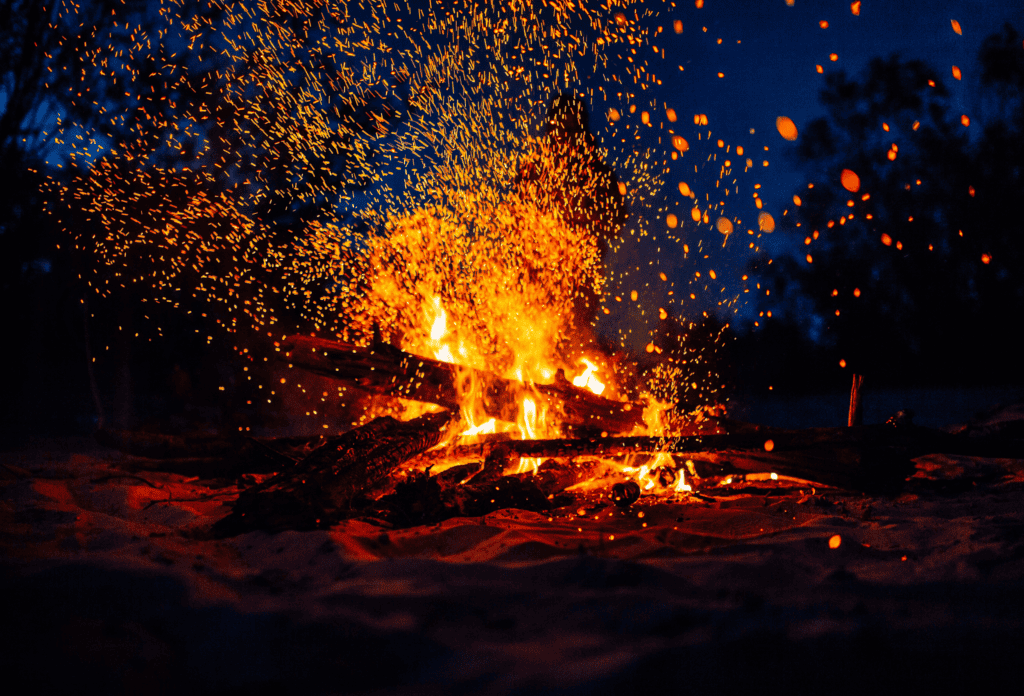In this post: Learn about some Hispanic cultural traditions, as well as some superstitions that take place on New Year’s Eve!
Every culture has its unique New Year’s Eve traditions, and Hispanic/Latino culture is no exception. In fact, some of the traditions from Spain and Latin America are so colorful and fun that they’ve caught on in other parts of the world.
For parents raising bilingual and bicultural families, exposure to Hispanic/Latino cultural traditions and heritage is a great way to enhance the learning process!

Our Llamitas Spanish Curriculum levels are packed with Spanish language learning activities filled with cultural references.
We teach Spanish through thematic units that are rooted in Hispanic culture, taking into account the diversity within Spanish, Hispanic, and Latino communities around the world. We believe learning a language and learning about the culture go hand in hand.
We also believe that cultural appreciation is important to instill in children from an early age to help them become more curious, tolerant, and enthusiastic about engagement with the world at large.

Table of Contents
The Llamitas Spanish Holiday Bundle
To further enhance your child’s Spanish language education, take advantage of the special learning activities in our Spanish Holiday Bundle, which includes 7 units about widely celebrated holidays in Spanish speaking countries.
Learn about fun Hispanic traditions, like the lead up to Christmas Day with “Las posadas”, the meaning behind an “ofrenda” during the Day of the Dead festival, or a study on Frida Kahlo and her amazing resilience and beautiful artwork.
Plus receive 4 bonus units for the four seasons free with your Holiday Bundle!

Celebrating New Year’s Eve in Spanish
New Year’s Eve (Nochevieja) is known across the Spanish speaking world as la despedida del año, a farewell to the old year.
It’s customary among Hispanic/Latinos to exchange kisses on the cheek when arriving at a social gathering, particularly during holidays. We also greet one another with the customary greeting feliz año nuevo, próspero año nuevo, or simply feliz año.
Kisses will be exchanged once again at the stroke of midnight when family members and close friends ring in the new year.
New Year’s Eve Traditions in Spanish Speaking Countries
Almost every country in Latin America has some kind of unique New Year’s Eve tradition, but many of the more common traditions come directly from Spain, or are modifications of Spanish customs. Many variations of these traditions are still practiced today, both in Spain and the Americas.

Comer 12 uvas
Probably the most well-preserved and widespread tradition to hail from Spain is the custom of eating 12 grapes as the clock strikes midnight on New Year’s Eve, one grape with each strike of the clock. Make a wish for the new year as you eat each grape.
One of our favorite children’s books to learn about the traditions of despedida del Año and the eating of the 12 grapes is The Lucky Grapes Book. It’s written in English with Spanish words sprinkled throughout.
- Hardcover Book
- Kyle, Tracey (Author)
- English (Publication Language)
- 32 Pages – 10/04/2022 (Publication Date) – Sky Pony (Publisher)
Encender velas or Alumbrar a los Santos
In many Spanish and Latin American households, families keep effigies of the Virgin Mary or other Catholic saints. It is customary to light candles to them as offerings for prosperity and blessings in the coming year.
In other households, particularly in the Caribbean regions of Latin America, candles may instead be lit on altars with photographs of the family’s ancestors. The practice of lighting candles is rooted in the belief that light eliminates darkness, and candles will welcome a brighter New Year.

Barrer la casa
In many Spanish speaking countries the practice of sweeping the house from the rear toward the front is done to sacar todo lo malo. This is performed just prior to midnight in order to make sure the home is cleansed and pure in time for the New Year.

Pasear con maletas
This tradition is also commonly practiced in Spain and many parts of Latin America, and it involves simply walking around the block with a suitcase.
This is to attract opportunities for travel and expansion. It’s usually OK if you don’t get to this around midnight (since there are often so many other things to do at that hour), and it is not uncommon to see people walking around the block with a suitcase at any hour during New Year’s Day. But ideally, the earlier you do it, the luckier it is.

Quemar figuras, cartas al Año Viejo, y otras cosas
The tradition of burning dolls, effigies, clothing, furniture, and other objects is widely varied and stretches across many areas of Latin America, from Honduras to Colombia, Peru, Ecuador, and Paraguay.
In Honduras, people may burn any object that has a negative association with events that occurred in the closing year, such as clothing, furniture, even pictures of unpopular politicians.
In Ecuador, communities band together to build large bonfires in which effigies called monigotes or Año Viejo are burned, and in Colombia people burn dolls or effigies that contain written messages recounting the negative events of the past year, so that all the negativity may be burned away.

Lentejas
In Hispanic/Latino culture, lentils are a staple food and represent money, affluence, and abundance. Basically, it is believed that if you have lentils on hand, you will never go hungry. Because of this, it is customary in Spain, as well as across most of Latin America, to either cook and eat lentils on New Year’s Day, or to carry a fistful of lentils in your pocket on New Year’s Day.

Usar ropa interior amarilla o roja
This colorful Mexican tradition involves wearing yellow or red underwear to celebrate New Year’s Eve. In some cases, people will wear their calzones outside of their normal clothing.
The colors are used depending on what one is hoping to attract in the New Year. Red is used to attract love and romance, while yellow is used to attract wealth and abundance.

Estrenar ropa: In Colombia, the tradition is to break out new clothing and wear them for the very first time on New Year’s Eve as a symbol of a fresh new start at midnight.
Tirar un cubo de agua por la puerta o la ventana
In Cuba and other parts of the Caribbean, where African traditions abound alongside Spanish customs, people pour a bucket of water out of the house and into the street at the stroke of midnight.
Before emptying the bucket, however, it is carried to every room in the house and swirled in circles in order to pick up all the negativity from each room. Then all the water is thrown forcefully into the street at midnight to evaporate. Be careful, if you’re ever in La Habana, to avoid walking under people’s balconies on New Year’s Eve.
Tirar páginas del calendario a la calle
In Uruguay, December 31st is the feast of San Silvestre, and the local tradition is to throw calendar pages from the Año Viejo out the doors and windows of homes and buildings until the streets are nearly covered in them. In many cases, people also write parting messages to the old year on these pages.

Tirar dinero en el aire para que no escampe en todo el año
In Ecuador, people observe a whimsical tradition of throwing a fistful of coins in the air at midnight so as to keep money raining all year long.

Poner un huevo en un vaso de agua para adivinar la suerte
This interesting tradition is practiced in Chile, where an egg is placed inside a glass of water at night and observed upon rising in the morning.
Depending on the shapes that the egg has formed in the water, predictions about the coming year can be made, such as a marriage (or divorce), a new baby, a new job, or a new home.
La letra del año
In Cuba and Cuban communities, a council of babalawos, or priests of the Afro-Cuban religion known a Ifá, gather together to make predictions using their divination tools, which consist of a board and some coconut shells on a special chain.
At the start of each year, the priests reveal la letra del año, which is a set of predictions, along with advice and guidance, for what their religious followers can expect and must prepare for in the New Year.
Homeschool Spanish Curriculum Levels
If you’re ready to begin the fun-filled journey of raising children that are bilingual, and biliterate, take our placement quiz today! It will help you determine which of our curriculum levels is most suitable for your child’s age and level of fluency.

Spanish Holiday Activities
We also invite you to enjoy these resources for celebrating bilingual holidays.


